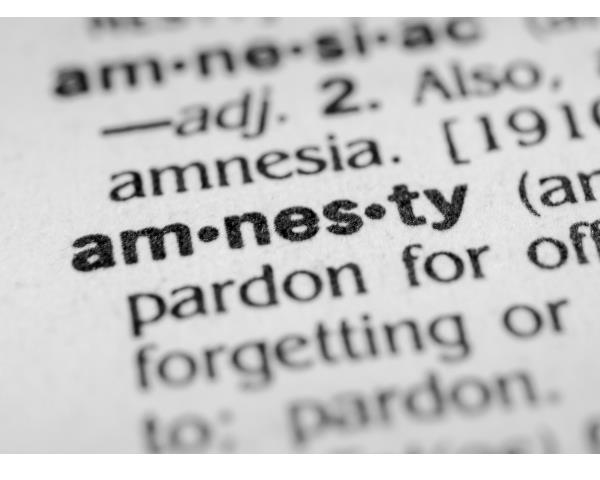
It is imperative that landlords know and understand the impact that the Consumer Protection Act has on lease agreements so that they can comply with the Act, particularly where early cancellation is concerned.
In the case of a natural person, (as opposed to a juristic person such as a company or close corporation) Section 14 of the Consumer Protection Act 68 of 2008 (“the Act”) together with Regulation 5 of the CPA address the cancellation of fixed term contracts and the regulation thereof.
Section 14(2) allows a tenant to cancel a fixed term residential lease agreement at any time by giving the landlord 20 business days’ notice in writing. The tenant remains liable to the landlord for all amounts owing in terms of the lease agreement up to the date of cancellation. For example, if the tenant cancels his or her lease agreement in August but has defaulted on the June rental payment and only partially paid the July rental payment fee, on cancellation of the lease agreement he or she will be liable for the outstanding rental fees for those two months as well as the early cancellation penalty that he or she has agreed to when signing the lease agreement.
Section 14(3) b (i) of the Act does stipulate that the landlord may impose a reasonable cancellation penalty to recover damages suffered from an early cancellation (prior to expiry of the lease agreement) but does not explicitly define what a reasonable cancellation penalty is. Regulation 5(2) of the Act describes a number of regulatory principles when determining whether a cancellation fee is reasonable in terms of the provisions of the CPA. These measures have been put in place to mitigate the potential financial burden placed on the landlord. These criteria are as follows;
The amount for which the tenant is still liable to the landlord as at the date of cancellation of the lease agreement;
The value of the rental paid by the tenant prior to cancellation of the lease agreement;
The duration of the lease agreement as initially agreed between the parties (in terms of the Act, a lease should not exceed 24 months unless it can be shown that there is financial benefit to the tenant in a longer lease);
Losses suffered by or benefits accrued to the tenant as a result of the tenant entering into the lease agreement;
The length of notice of cancellation provided by the tenant to the landlord;
The potential for the landlord to find a suitable replacement tenant during the notice period; and
The general practice within the property rental industry.
In addition to this, Regulation 5 (3) of the Act further provides that the cancellation penalty cannot equate to an amount higher than the amount that the tenant would have been liable for had he or she not chosen to cancel. The conditions of an early cancellation are stipulated in the lease agreement and both parties acknowledge and accept these conditions on signing the lease. The industry standard is a penalty equal to one months’ rent.
Case Study: Rental Housing Tribunal Ruling on Early Cancellation Penalty
Etchells & Young recently received a ruling from the Rental Housing Tribunal where are tenant lodged a complaint claiming that the one-month early cancellation penalty was unfair practice and requested that the Tribunal instruct E&Y (on behalf of the landlord) to refund the penalty retained from the tenant’s deposit.
The Background:
The property in question was a furnished property and the tenant had paid a double deposit before occupation. The premises was handed back in a very good condition by the tenant and no damages were deducted from his deposit.
The tenant had renewed the original lease and had then given 20 business days’ notice (as per the CPA) to cancel the lease agreement. The lease would thus terminate 2 months before the end of the 12 month renewal period.
The tenant was notified that the cancellation penalty would be one months’ rent as per the stipulations of the original lease, but that the landlord was willing to waive the penalty if a new tenant was placed with no rental vacancy being incurred.
The tenant did not agree with or accept the cancellation penalty fee and believed he had complied with the notice requirements by simply giving 20 business days’ notice.
Without delay, the E&Y agent listed the property and started the process of finding a new tenant.
The tenant was restrictive about giving access to potential new tenants to view the property, only allowing viewings before 8am or after 5pm. The tenant also insisted on full Covid screening of all prospective tenants wishing to view and requested their full names and ID numbers. These requirements made viewing the property a challenge, and while the E&Y agent had potential interested parties, few were prepared to view at those times, undergo Covid testing or supply their personal information upfront. The tenant finally granted access by the 19th of the month and a new tenant was placed for occupation a month later. The landlord thus suffered a loss of one months’ rent.
The Ruling:
In terms of the notice to cancel provided by the tenant, the Tribunal cited Section 14(2) of the CPA whereby a tenant may cancel a lease agreement by giving 20 days’ written notice thereof. Such early termination may be exercised by the tenant without the need to prove that there has been any breach of the provisions of the lease, and furthermore this right cannot be overridden by any clauses to the contrary in the lease itself. The Tribunal holds that the notice was therefore valid and not defective in any way.
The Tribunal acknowledged the landlord’s right to claim an early cancellation penalty based on a fixed lease period scenario and cites the CPA which states (paraphrased): once a tenant has elected to exercise his/her right to early cancellation, the landlord then has a right in turn to impose a reasonable cancellation penalty upon the tenant. There must be reasonableness attached to this right and it should be supported by actual loss of income.
The Tribunal also holds that the landlord should be proactive in finding a replacement tenant in order to mitigate his losses, and that he/she cannot simply leave the property vacant for the remainder of the lease period and claim rental for such period from the tenant. The landlord did attempt to mitigate his losses by instructing the agent to advertise the property a day after receiving the notice, however, the tenant made access to the property for viewing purposes difficult and this prolonged efforts to find a replacement tenant.
The landlord suffered a loss of rental income equal to one month because the tenant restricted access and made viewings difficult. The Tribunal asserts that the tenant must accept that his actions have repercussions and that it is common cause that a new tenant was only placed in the following month. This effectively means loss of rental to the landlord for one month. The penalty incurred is thus reasonable given the issues regarding access.
Had a new tenant been found timeously and the landlord still proceeded to apply an early termination penalty the Tribunal would have found the landlord’s penalty unreasonable.
In Summary:
The Tribunal found that the Landlord had not acted unfairly or unreasonably by charging the Tenant a one month cancellation penalty, given the circumstances surrounding access to the property.
The Tenant was still responsible to pay for all utilities consumed during his occupation, even if they were only billed after he vacated.
The Landlord had to refund the interest earned on the Tenant’s deposit to the Tenant, but he could deduct the utilities owed before making the refund.
The E&Y Agent’s actions of immediately listing the property and trying to find a replacement Tenant was crucial in this case.
















































![What is POPIA? [Part 1]](https://s3.entegral.net/news/Thumbnail_2021_10_18_11_53_39_403.jpeg)






























































































































































